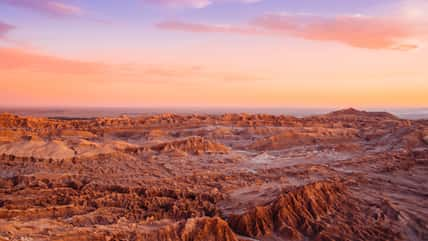These Researchers Learned That Volcanoes Can Produce Sapphires

Like many precious gemstones, sapphires originate in the bowels of the Earth’s crust. However, the exact process that led to the formation of these sparkling blue crystals has eluded scientists until now.
In a recent study, researchers from Heidelburg University have been studying the formation of sapphires in volcanic regions, giving rise to new insights into the origins of sapphires.
The main ingredient in sapphires is a form of aluminum oxide. There are also traces of iron, titanium, lead, cobalt, chromium, magnesium, boron, silicon, and vanadium. Their brilliant blue hue comes from these trace elements, particularly titanium and iron.
They interact with the crystal lattice and absorb wavelengths of light in the red and yellow parts of the spectrum.
When those wavelengths are absorbed, the remaining reflected light is mostly blue, resulting in a rich azure color.
The cocktail of elements is derived naturally from ancient volcanic rock that is low in silicon dioxide but full of sodium and potassium.
The researchers studied 223 sapphires found in the Eifel mountain range of western Germany. The Eifel is a volcanic region where magma from the Earth’s mantle has been penetrating the crust for almost 700,000 years.
Experts didn’t know why sapphires are frequently found in these areas, but the researchers discovered that volcanic activity was the answer.
They believed that sapphires in the Earth’s crust originated from clay sediments at high temperatures. As magma ascended and pressure was built up, the crystals ended up on the Earth’s surface.

Mateusz – stock.adobe.com – illustrative purposes only
They decided to test the theory through a series of geochemical analyses, which showed that a portion of tiny sapphire grains were present in rock samples collected from volcanic deposits in the region. But most of the sapphires came from river sediments.
“Like gold, sapphire is very weathering-resistant compared to other minerals. Over protracted time periods, the grains are washed out of the rock and deposited in rivers,” Sebastian Schmidt, a graduate student at Heidelburg University, explained.
“Because of their high density, they are easy to separate from lighter sediment components using a gold pan.”
The age of the sapphires from the Eifel was determined using oxygen isotope and trace element analysis, revealing that they had been formed at the same time as volcanism.
As a result, the sapphires inherited the isotopic signature from mantle melts. They were mixed with heated and partially melted rock from the crust located about three to four miles deep.
Other sapphires were formed when they came into contact with subterranean rock walls, triggering the production of sapphires.
“In the Eifel, both magmatic and metamorphic processes, in which temperature changed the original rock, played a role in the crystallization of sapphires,” concluded Schmidt.
The details of the findings were published in the journal Contributions to Mineralogy and Petrology.
Sign up for Chip Chick’s newsletter and get stories like this delivered to your inbox.
More About:News





